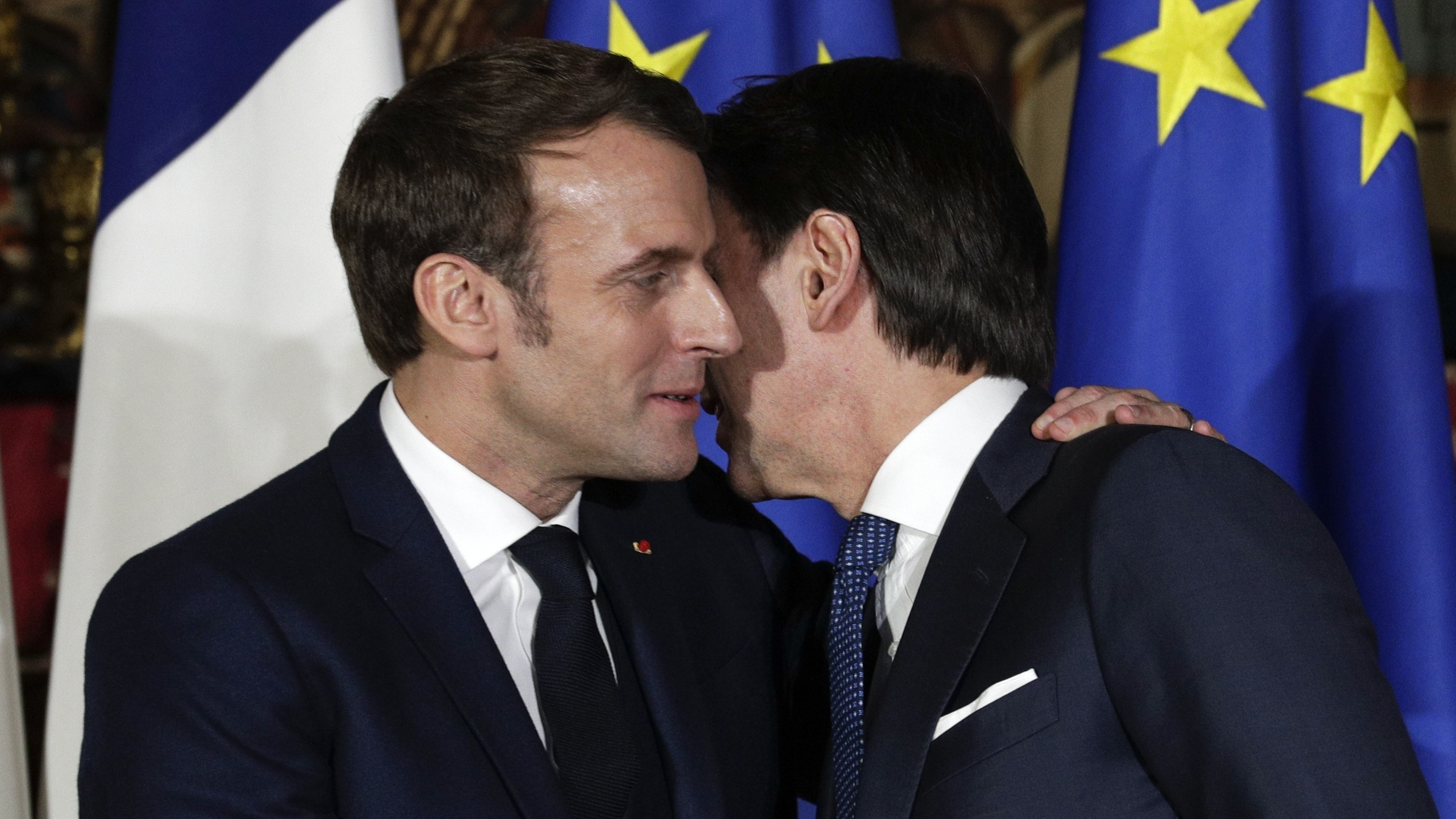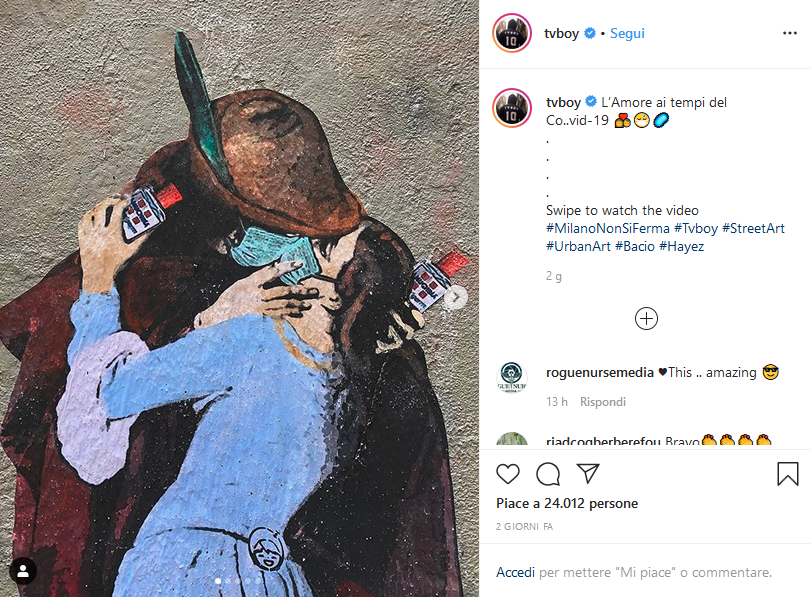00:42

As containing COVID-19 becomes a reality across Europe, countries are taking extreme measures to minimize infection. On Saturday, French health minister Olivier Veran asked his compatriots to avoid handshakes and kiss greetings.
After 16 new cases of the coronavirus were recorded in France, the government has also closed many schools, banned gatherings of more than 5,000 people in confined spaces and asked citizens to wash their hands thoroughly - but it is perhaps the advice to avoid handshakes, hugs and kisses that is the biggest culture shock.
This health advice clashes with the country's traditionally tactile culture, and France isn't alone in this. In the European country where most cases have been recorded, Italy, all those friendly gestures regarded as so typically Italian are now being discouraged.
The effects of COVID-19 go beyond national culture into religious practice. In Italian churches, the fear of contagion has overruled the ritualistic handshake in the name of peace and solidarity between worshipers - and the ceremony of the holy communion hand-to-mouth is now frowned upon.
As global media broadcasts images of public officials and medical staff in masks and containment suits while fighting COVID-19, Europeans are left confused about where the line is between reasonable precaution and panic, even if the case for avoiding direct contact with other people is legitimate.
But a case can also be made for keeping an appearance of normality in times of crisis. Old habits die hard: the French, the Italians, or the Spanish are unlikely to suddenly deny their families and friends a gesture that has so much meaning in their countries' everyday life.

What's in a kiss? The origin and significance of the kiss greeting
In our globalized world it is quite common for a Spanish person to meet a British one, for a German to hang out with a Brazilian, for a Japanese to work with an Italian.
And where one might greet a friend or a colleague with a wave, the other might go for a simple nod or a handshake, a kiss on the cheek or maybe two, or even a hug. And it's not always easy to coordinate the same ritual.
Given the importance of first impressions, being introduced to someone new can already be nerve-wracking, when the greeting has the potential to turn into an awkward experience.
Even among countries that share the tradition of kiss greeting – and this goes from European to Latin American countries and some parts of the Middle East and Asia - the rules to the ritual are not the same everywhere, with many a potential faux pas.
If you're faced with a kiss greeting the first time you're ever meeting someone in Europe, it's very likely that the person in front of you will be French. If an Italian greets you with two cheek kisses, they probably consider you a friend.
All these kisses are rarely lip-to-cheek kisses, but they're normally 'air kisses' and equal to a grazing of the cheek.
It's a ritualistic act in which closeness to the other person, gender dynamics and tradition all play a role.

Graffiti in Milan by Italian street artist TvBoy reworks Francesco Hayez' iconic 'The Kiss' with the lovers wearing face masks and holding hand sanitizers. TvBoy/Instagram
Graffiti in Milan by Italian street artist TvBoy reworks Francesco Hayez' iconic 'The Kiss' with the lovers wearing face masks and holding hand sanitizers. TvBoy/Instagram
While giving one kiss is common in Colombia, Argentina, Chile, Peru and the Philippines, in Europe it would probably make people uncomfortable.
Italy, Portugal, Spain, Greece, Hungary, Romania, Croatia, Bosnia and France all share the tradition of giving two kisses – though the number of kisses changes region by region in France and there's even a website recording how many kisses to expect where - but whereas all of these countries start on the right cheek, the Italians start on the left: a formula for social disaster.
Three kisses are shared as a greeting in Belgium, Ukraine, Serbia, Montenegro, Macedonia, Slovenia, the Netherlands and Switzerland.
The origin of kiss-greeting are almost lost in a faraway ancestral past, but there's agreement among the experts that the Romans were the ones who made it popular and exported the ritual across Europe.
The Romans' osculum - a kiss shared for greeting each other to show politeness and courtesy - gained popularity across Europe and became tied up in various customs from country to country. On 16 July 1439, as the plague spread across England, King Henry VI was forced to ban kissing to avoid contagion – sound familiar?
Henry's ban was ineffective, and non-romantic kissing returned, to a greater or lesser extent, in most cultures. This interestingly personal ritual has now stubbornly survived for centuries, through increased levels of hygiene and etiquette awareness, defeating even the rising importance set on the concepts of physical boundaries.
The reasons can be found in the values it represents: a kiss on the cheek is a way to offer someone a warm welcome, to show them friendship and affection, to establish a certain degree of closeness to someone.
France, Italy, Spain, Portugal and all the other countries where is common to greet someone with kisses are all cultures where human contact is a fundamental part of the national character. The greeting kiss, the physical proximity, the occasional hand on the shoulder are all ways in which these countries express the idea of being sociable.
It might seem like a little thing to give up, a basic health measure: but for the people who kiss their friends and families hello and goodbye, avoiding this deeply entrenched gesture is equivalent to rejecting a social ritual that has been establishing and reinforcing relationships through all their life.
Remember to sign up to Global Business Daily here to get our top headlines direct to your inbox every weekday